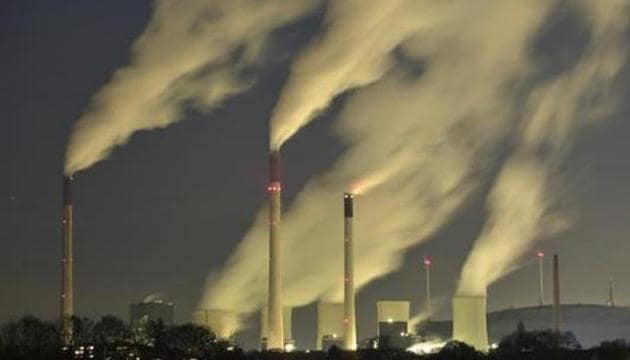CO2 emissions soar as key nations turn back on green goals
Global energy-related carbon emissions rose to a record high last year as energy demand and coal use increased, the International Energy Agency (IEA) said on Tuesday in a report that identified the United States, China and India as being the countries that accounted for 75% of the increase.
Global energy-related carbon emissions rose to a record high last year as energy demand and coal use increased, the International Energy Agency (IEA) said on Tuesday in a report that identified the United States, China and India as being the countries that accounted for 75% of the increase.

The findings are worrying because the Intergovernmental Panel on Climate Change (IPCC) warned last year that at the current rate of emissions, the average global temperature increase over pre-industrial levels will inevitably breach the 2°C target – a level beyond which climate change is expected to lead to “devastating consequences”.
Energy-related carbon dioxide emissions in 2018 rose by 1.7% to 33.1 billion tonnes from the previous year, the fastest pace since 2013, with the power sector accounting for almost two-thirds of this increase, according to IEA estimates. The increase in energy demand was largely due to heating and cooling needs in nations that saw extreme temperatures, the report said. According to experts, the findings suggest a bigger compromise with goals to fight global warming, with the most significant being a rise in fossil fuel use. “We have to read this report in the light of another recent report which shows investments in fossil fuels is on the rise. It shows that industry has gone back to business-as-usual and is waiting on the fringes as they have got mixed signals from countries like US which have expressed desire to pull out of the Paris agreement,” said Karan Mangotra, fellow at The Energy and Resources Institute.
“This trust deficit is a problem. We need a strong coalition of countries and companies vouching for green, viable and reliable energy systems.”
IEA executive director Fatih Birol said 2018 marked an “extraordinary increase” in global energy demand, which grew at its fastest pace this decade. “Last year can also be considered another golden year for gas, which accounted for almost half the growth in global energy demand. But despite major growth in renewables, global emissions are still rising, demonstrating once again that more urgent action is needed on all fronts — developing all clean energy solutions, curbing emissions, improving efficiency, and spurring investments and innovation, including in carbon capture, utilisation and storage,” Birol added.
According to the IEA report, global energy demand grew by 2.3% last year. “Cold snaps drove demand for heating and, more significantly, hotter summer temperatures pushed up demand for cooling,” the report said.
China, India, and the United States accounted for 75% of the net increase in emissions, while emissions fell in Germany, Japan, Mexico, France and the United Kingdom, the report said.
In India, carbon dioxide emissions rose by 4.8% due to a jump in energy use in power, transport and industry sectors. Despite this growth, per capita emissions in India are among the lowest at only 40% of the global average.
According to the IPCC last year, limiting global warming to 1.5°C would require “rapid and far-reaching” transitions in land, energy, industry, buildings, transport, and cities. Global net human-caused emissions of carbon dioxide would need to fall by about 45% from 2010 levels by 2030, reaching “net zero” around 2050.
“The findings are a grim reminder of the challenge at hand, but it is not especially surprising. India’s emissions are increasing— which is entirely expected— but we seem to be on track to meet our Paris commitments. With a report like this, our response should not be to panic. Instead, we should strengthen our efforts in meeting our commitments, and aggressively implement mitigation measures in the present,” said Santosh Harish, a fellow at the Centre for Policy Research (CPR).






